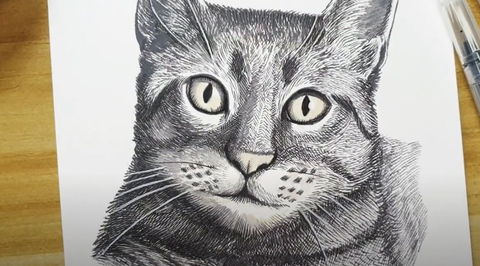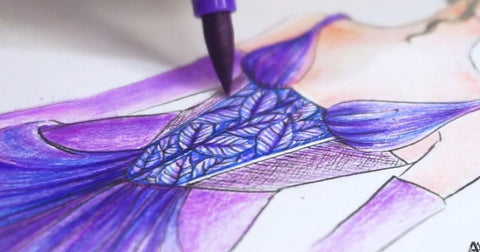Into the Creative Mind of Auguste Rodin: His Art, Style, and Story
Last Updated: October 13, 2025
“There is nothing ugly in art except that which is without character, that is to say, that which offers no outer or inner truth.” - Auguste Rodin
I. Introduction
Auguste Rodin, a name synonymous with innovation and creativity, was a pioneering sculptor whose work continues to inspire and captivate audiences around the world. His significance in the art world cannot be overstated, as he revolutionized the traditional approach to sculpture and paved the way for modern artistic expression.

Understanding Rodin's creative process and the inspirations behind his masterpieces is crucial in gaining insight into the mind of this artistic genius. By delving into his art, style, and story, we can unravel the depths of his imagination and appreciate the profound impact of his work on the art world.
II. Rodin's Artistic Journey
Rodin's early exposure to art and his journey to becoming a renowned sculptor were marked by numerous challenges and setbacks. Born in Paris in 1840, Rodin showed an early aptitude for drawing and sculpting, but his path to artistic recognition was far from smooth. Despite facing rejection from several art schools, he persevered and continued to hone his craft, eventually gaining recognition for his unique talent.

Formal training played a pivotal role in shaping Rodin's artistic style. His exposure to the works of Michelangelo and Donatello, as well as his time spent studying classical sculpture at the École des Beaux-Arts, greatly influenced his approach to art. These formative experiences laid the foundation for Rodin's distinctive style, characterized by its emotive power and raw, unbridled expression.
III. Iconic Sculptures

A. The Thinker
This is perhaps one of Rodin's most iconic works and embodies profound contemplation and intellectual depth. This masterpiece, originally conceived as part of a larger composition entitled "The Gates of Hell," captures the essence of human introspection and philosophical inquiry. The figure's powerful posture and furrowed brow symbolize the intensity of thought, inviting viewers to ponder life's most profound questions.
Rodin's creative process and inspiration behind The Thinker reveal a deep fascination with the human psyche and the complexities of the human condition. Drawing from sources as diverse as Dante's "Divine Comedy" and Michelangelo's sculptures, Rodin sought to imbue his creation with a sense of universal truth and introspective insight.
“The artist must create a spark before he can make a fire and before art is born, the artist must be ready to be consumed by the fire of his own creation.” - Auguste Rodin

The Kiss (Source)
B. The Kiss
Another renowned sculpture by Rodin, encapsulates the emotional and romantic elements of human intimacy with unparalleled grace and sensitivity. The entwined figures exude an undeniable sense of passion and tenderness, evoking a timeless portrayal of love and affection.
Rodin's approach to depicting human intimacy in The Kiss reflects his keen understanding of human emotion and connection. Through meticulous attention to detail and a profound sensitivity to form, he succeeded in capturing the essence of love in its purest and most transcendent form.

The Gates of Hell (Source)
C. The Gates of Hell
This masterpiece was originally conceived as a portal for a proposed Museum of Decorative Arts in Paris, but it eventually evolved into a standalone sculpture that stands as a testament to Rodin's artistic genius.
The piece is a visual representation of Dante Alighieri's "Inferno," the first part of his epic poem "The Divine Comedy." Rodin's interpretation of Dante's Inferno is a powerful and haunting portrayal of the nine circles of Hell as described in the poem. The sculpture is teeming with figures and scenes that capture the anguish, torment, and despair of the damned souls.

The Burghers of Calais (Source)
Rodin's innovative techniques and artistic choices are evident in the dynamic and expressive forms of the figures, as well as his unconventional approach to composition and texture. He employed a method of assemblage, incorporating various figures and elements from his previous works into the composition of The Gates of Hell, creating a complex and multifaceted narrative within the sculpture.
Additionally, Rodin's use of rough and unfinished surfaces added a raw and visceral quality to the piece, enhancing its emotional impact on the viewer. The Gates of Hell stands as a timeless and evocative representation of one of the most enduring literary works in history, showcasing Rodin's unparalleled ability to capture the depth of human emotion and experience through his art.
IV. Rodin's Unique Artistic Style
Rodin's artistic style is characterized by its emphasis on movement and dynamism, challenging the static conventions of traditional sculpture. His innovative approach to capturing motion and energy in his works breathed new life into the art form, paving the way for future generations of artists to explore new avenues of expression.
The human form and expression served as primary subjects of exploration for Rodin, who sought to convey the full spectrum of human experience through his art. His ability to infuse his sculptures with raw emotion and unbridled passion set him apart as a visionary artist whose work transcended mere representation, delving into the depths of human consciousness.
V. Legacy and Impact
Rodin's enduring influence on subsequent generations of artists is a testament to the profound impact of his work on the art world. His innovative techniques and fearless approach to artistic expression continue to inspire contemporary sculptors, who look to his legacy as a wellspring of creative inspiration.
The enduring relevance and appreciation of Rodin's work underscore the timeless nature of his artistic vision. His sculptures continue to resonate with audiences worldwide, captivating new generations with their timeless beauty and emotional resonance.

The Burghers of Calais, Rodin Wing at the Shizuoka Prefectural Museum of Art
VI. Conclusion
Auguste Rodin's artistic brilliance remains an enduring testament to the power of creativity and imagination. His ability to capture the complexities of the human experience through sculpture has solidified his legacy as one of history's most influential artists. By engaging with his art, we can gain a deeper understanding of the human condition and appreciate the transformative power of artistic expression.
FAQs
Q: Why is The Thinker so famous?
The Thinker is one of Rodin's most iconic and famous sculptures. It is renowned for its powerful and contemplative depiction of the human form. The sculpture captures a man deep in thought, with his chin resting on his hand, conveying a sense of intellectual and emotional introspection. The Thinker has become a symbol of human contemplation and has had a lasting impact on art and popular culture.
Q: Who is the Father of Sculpture?
Auguste Rodin is often referred to as the "Father of Modern Sculpture" or the "Father of Sculpture."
Q: Why is Rodin considered the Father of Sculpture?
Rodin is considered the Father of Sculpture for several reasons. First, he revolutionized the art form. Rodin challenged traditional sculptural techniques and conventions, introducing a more expressive, dynamic, and naturalistic approach to the medium. There was also an emphasis on the human form as Rodin's sculptures focused intensely on the human body, capturing its movement, emotion, and inner complexity in unprecedented ways. Moreover, he pioneered the use of rough, unfinished surfaces and fragmented forms, breaking away from the smooth and polished aesthetic that was previously dominant in sculpture.
Rodin's groundbreaking work had a profound impact on subsequent sculptors, paving the way for the modernist and expressionist movements in sculpture. His innovative approach, dedication to the human form, and lasting influence on the art form solidified Rodin's reputation as the "Father of Sculpture."








